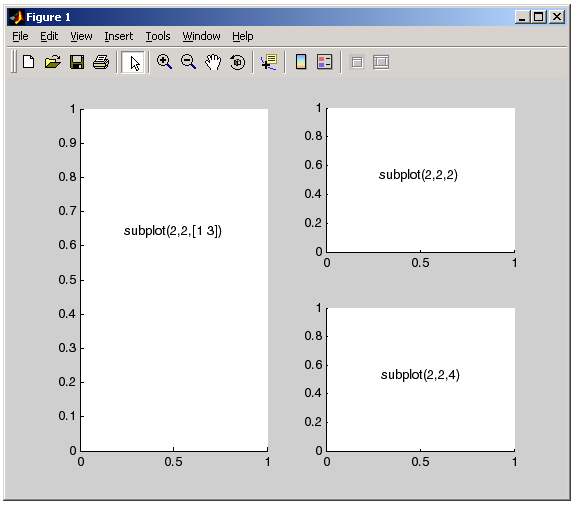

The code below downloads the daily closing prices for Apple (AAPL), Microsoft (MSFT), Tesla (TSLA), Nvidia (NVDA), and Intel (INTC).
#Subplot meaning download#
(financial functions for Python) library it is very easy to download the data for a given list of stock tickers. Why stock prices? Because it is trendy for people to use (maybe I’ll get some good SEO?), but also using the ffn
#Subplot meaning how to#
How can you loop through a subplot grid? # Example dataset #īefore we can demonstrate the plotting methods, we need an example dataset.įor this analysis, we will use a dataset containing the daily closing stock prices of some popular tech stocks and demonstrate how to plot each time-series on a separate subplot. In this post, I outline two different methods for plotting subplots in a single loop which I find myself using on a regular basis. While this gives you a lot of flexibility it can be overwhelming and difficult to understand the best way to do things, particularly when starting out or learning new functionality. One strength, but also arguably one of Matplotlib’s biggest weaknesses, is its flexibility which allows you to accomplish the same task in many different ways. So what can we do in this situation? We have a list of items we want to plot and we have a list of lists with our subplots, is there a way to conveniently plot our data in a single for loop? This is because, when creating the subplot grid using plt.subplots, you are returned list of lists containing the subplot objects, rather than a single list containing of subplot objects which you can iterate through in a single for loop (see below): However, when using Matplotlib’s plotting API it is not straightforward to just create a grid of subplots and directly iterate through them in conjunction with your list of plotting attributes. total order value by day) on a grid of individual subplots.

a list of customer IDs) and sequentially plot their values (e.g. In an ideal world, you would like to be able to iterate this list of items (e.g.

For example, when you have a list of attributes or cross-sections of the data which you want investigate further by plotting on separate plots. When carrying out exploratory data analysis (EDA), I repeatedly find myself Googling how to plot subplots in Matplotlib using a single for loop.
#Subplot meaning full#
In Old French the prefix appears in the full Latin form only "in learned adoptions of old Latin compounds", and in popular use it was represented by sous-, sou- as in French souvenir from Latin subvenire, souscrire (Old French souzescrire) from subscribere, etc. In Latin assimilated to following -c-, -f-, -g-, -p-, and often -r- and -m. Word-forming element meaning "under, beneath behind from under resulting from further division," from Latin preposition sub "under, below, beneath, at the foot of," also "close to, up to, towards " of time, "within, during " figuratively "subject to, in the power of " also "a little, somewhat" (as in sub-horridus "somewhat rough"), from PIE *(s)up- (perhaps representing *ex-upo-), a variant form of the root *upo "under," also "up from under." The Latin word also was used as a prefix and in various combinations.


 0 kommentar(er)
0 kommentar(er)
